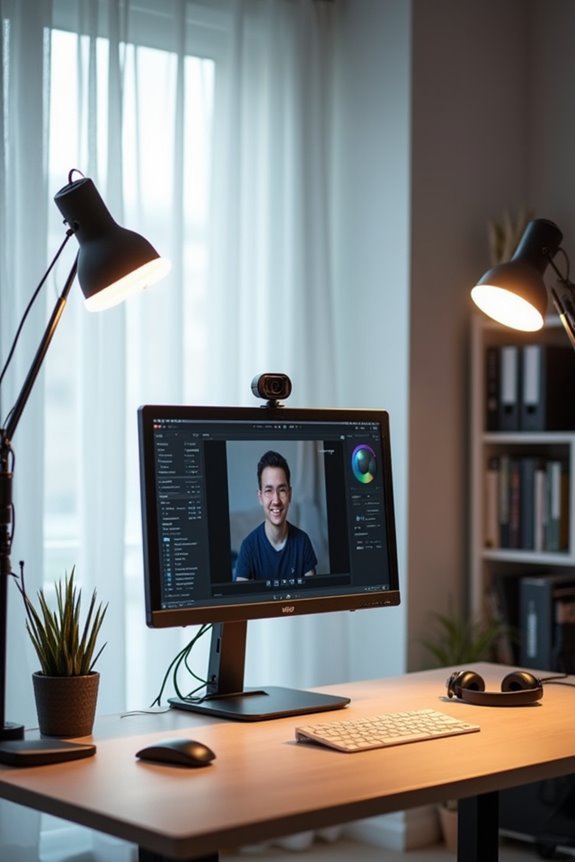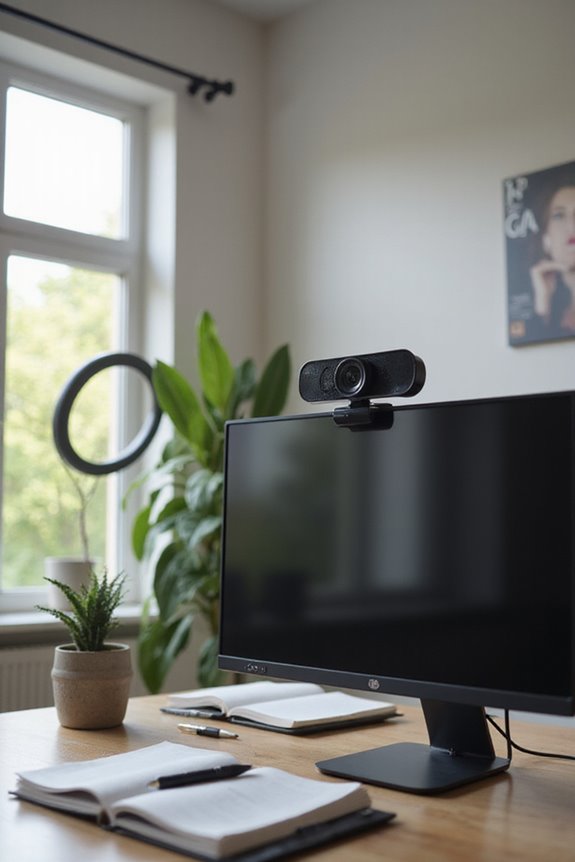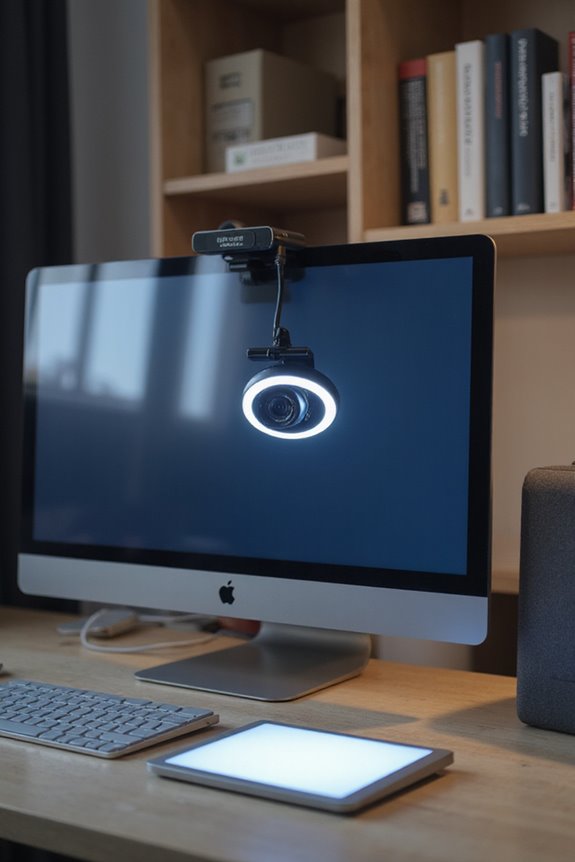To guarantee effective video conferencing, I follow several best practices. First, I prepare by sharing agendas and scheduling meetings considering all participants’ time zones. Security is vital, so I use encrypted tools and implement access controls. During meetings, I maintain good etiquette, joining on time and speaking clearly while minimizing distractions. Choosing reliable technology is essential; I opt for platforms that support necessary features. If you’re interested in more detailed insights on optimizing your video meetings, there’s much more to explore.
Key Takeaways
- Distribute the agenda and objectives in advance to ensure participants are prepared and engaged during the meeting.
- Use secure platforms with encryption and implement access controls to protect meeting privacy and data.
- Test equipment beforehand and choose a quiet, well-lit environment to minimize distractions and enhance professionalism.
- Encourage active participation and maintain clear communication to foster an engaging and interactive atmosphere.
- Join meetings on time and adhere to etiquette, such as muting when not speaking and wearing neutral attire.
Preparation for Video Conferencing
When preparing for a video conference, it’s essential to contemplate several key factors to guarantee the meeting runs smoothly and achieves its objectives. First, agenda distribution is vital; sending the agenda and objectives to participants beforehand helps everyone prepare and stay focused. I also recommend using scheduling tools like Doodle or Calendly to coordinate availability and set clear times, considering participants’ time zones.
Additionally, role assignment is important. Designate a host, a facilitator, and possibly a producer for larger meetings to make certain that responsibilities are clear. Remember to include meeting details such as the platform and access link in your invitations, allowing participants to know what to expect and how to join effectively.
Security and Privacy
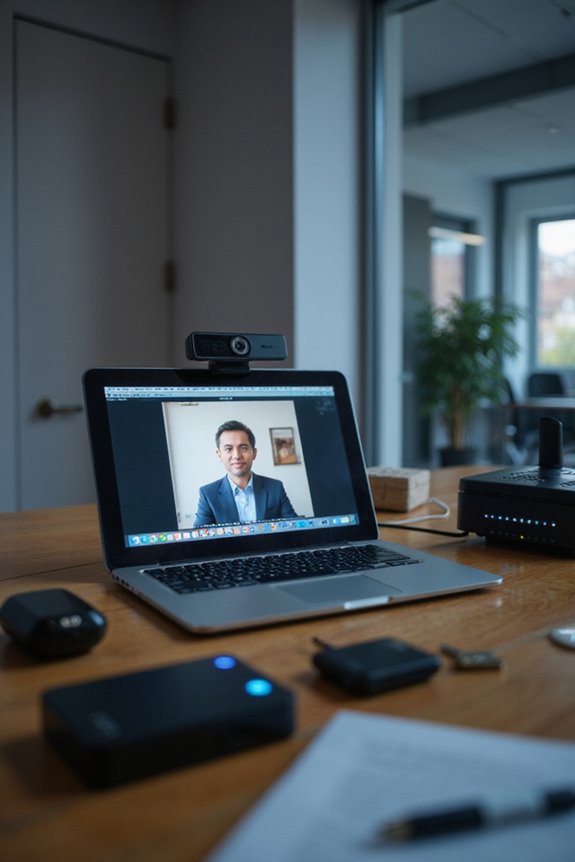
Ensuring security and privacy during video conferences is essential, especially as remote communication becomes more commonplace. To achieve this, I recommend using video conferencing tools that support strong encryption protocols. This protects data transmission from unauthorized access. Additionally, ensuring your Wi-Fi network is encrypted with WPA2 or WPA3 enhances network security.
Implementing access controls, such as passwords and waiting rooms, helps restrict unauthorized participants. I also suggest enabling two-factor authentication for an added layer of security.
For data protection, comply with privacy regulations and inform participants about any recordings. Limit file sharing and control screen sharing to prevent accidental exposure of sensitive information. Regularly updating your software is vital to safeguard against potential threats like malware or data breaches.
Enhancing User Experience
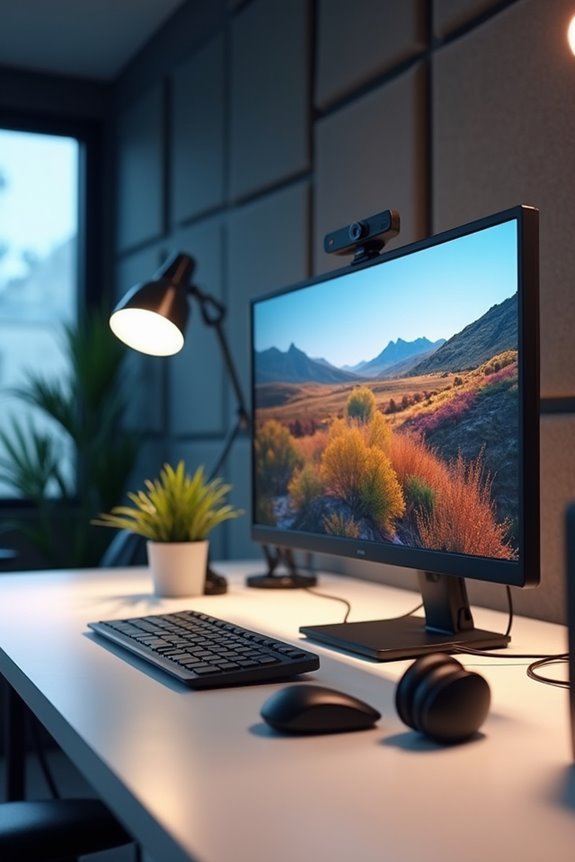
To create an effective video conferencing environment, it’s vital to prioritize user experience, as this directly impacts engagement and productivity. Utilizing adaptive interfaces allows the platform to respond to individual user preferences, whether they’re on a mobile device, desktop, or web app. This flexibility enhances accessibility and guarantees that all participants can share content easily.
User customization options are significant; allowing users to tailor their interface to meet immediate needs promotes comfort and efficiency. Additionally, seamless switching between devices should be supported to maintain workflow without disruption. Encouraging active participation and providing intuitive navigation will further enhance the experience, making video conferencing a more dynamic and inclusive environment for everyone involved.
Etiquette and Protocol

Effective video conferencing hinges on understanding and adhering to proper etiquette and protocol. To foster virtual professionalism, it’s essential to prepare thoroughly before each call. This includes testing equipment, choosing a quiet and well-lit background, and joining on time. During the meeting, I focus on respectful engagement by speaking clearly, maintaining eye contact with the camera, and actively listening to others. I also make sure to mute my microphone when not speaking to minimize distractions. Additionally, I wear neutral attire to avoid visual distractions and always inform participants if the meeting will be recorded. By managing these elements, I help create an atmosphere that values each participant’s contributions, enhancing the overall effectiveness of our virtual interactions.
Technology and Tools
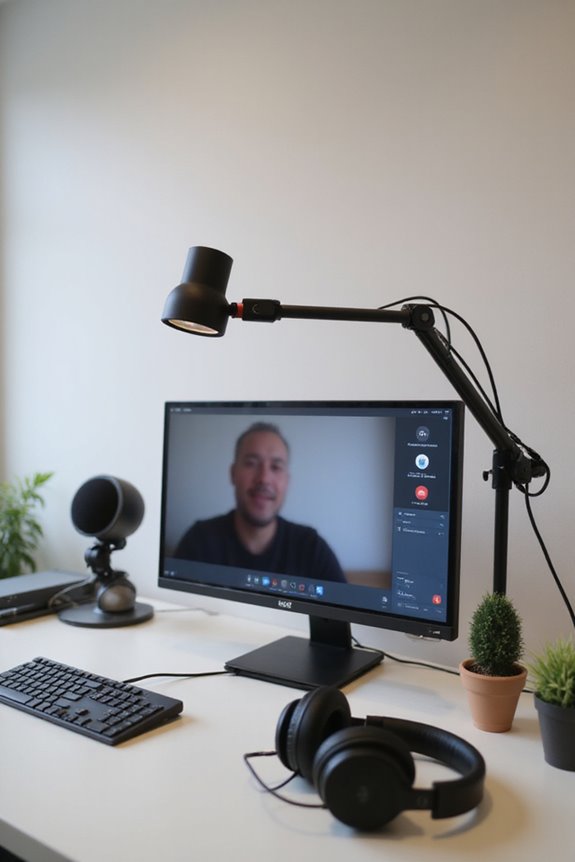
Selecting the right technology and tools for video conferencing can greatly impact the quality and effectiveness of your virtual meetings. First, focus on technology selection by choosing platforms like Zoom, Google Meet, or Microsoft Teams that are compatible with desktop, mobile, and web devices. Look for features such as breakout rooms, screen sharing, and meeting recording.
Next, prioritize connectivity hardware. Confirm your setup includes high-quality microphones and cameras, as well as a reliable internet connection—ideally wired for stability. A minimum of 1.5 Mbps upload/download per participant is recommended for HD video. By considering these factors, you can create an ideal environment for effective virtual collaboration.
Post-Meeting Activities

Post-meeting activities are essential for reinforcing the outcomes of virtual meetings and guaranteeing that all participants remain aligned on their responsibilities. To start, I recommend sending out detailed meeting minutes, which summarize key discussions and document decisions made. This clarity helps with action item tracking, as it’s important to assign specific tasks to team members along with clear deadlines.
Additionally, don’t forget to collect feedback after the meeting. Gathering insights from participants can improve future sessions and enhance overall effectiveness. Sharing recordings of the meeting allows for easy reference, while regular reminders help maintain accountability. By implementing these practices, we can guarantee that everyone stays engaged and informed, leading to more productive collaboration in future video conferences.
Frequently Asked Questions
How Do I Choose the Right Video Conferencing Platform for My Needs?
When choosing a video conferencing platform, I focus on essential platform features like audio quality and screen sharing, along with a user-friendly interface. It’s vital for seamless communication and an enjoyable experience for everyone involved.
What Should I Do if My Video or Audio Quality Is Poor?
If I’m experiencing poor video or audio quality, I check my network bandwidth and verify my device compatibility. Lowering video resolution and updating software often helps improve the overall experience considerably.
How Can I Encourage Participation During Virtual Meetings?
Ah, the art of persuasion! I find incorporating icebreaker activities and engagement strategies, like polls or Q&A sessions, really helps encourage participation during virtual meetings. It creates an inviting atmosphere where everyone feels valued and involved.
What Are the Best Ways to Follow up After a Meeting?
After a meeting, I always send concise meeting summaries highlighting action items. This guarantees everyone’s clear on their responsibilities and encourages accountability. Timely distribution keeps the momentum going and reinforces engagement among all participants.
How Can I Troubleshoot Common Video Conferencing Issues?
When I face connection issues during video calls, I first check for software updates. It’s surprising how often those little updates can resolve glitches, ensuring smoother conversations and a more productive meeting experience for everyone involved.

